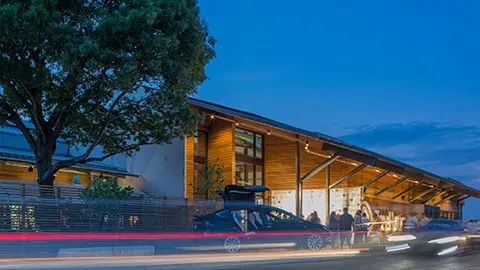Zero-Emissions for the Best-Selling CUV in the Past 25 Years
On the road to zero emissions driving, most of the conversation is about battery electric cars. But there is actually another option available to some drivers looking to eliminate tailpipe emissions: Hydrogen.
Currently available in very limited markets, hydrogen cars are an interesting and viable way to go zero-emissions. At the moment, lack of choice and a very sparse refueling infrastructure are limiting factors for most buyers outside of California.
Honda has always been a believer in hydrogen. When processed through a hydrogen fuel cell, it can produce enough power for electric driving, and the only emissions from the car are water. And a hydrogen-powered vehicle can be filled up in a similar amount of time as a gasoline vehicle. This is a major advantage over battery-powered cars, which can take much longer to recharge.
Clearly, Honda sees a continued future for hydrogen driving, as it has just announced that a new fuel-cell electric vehicle, based on the all-new CR-V, will go into production at the company’s Ohio manufacturing center in 2024. Along with a number of new battery-electric models the hydrogen-powered CR-V is one step on the path to 100% of Honda’s global auto sales being zero-emissions by 2040.

New Honda CR-V Will Combine Fuel Cell and Plug-In Technology
The new CR-V-based fuel-cell electric vehicle (FCEV) be North America’s first production vehicle to combine a plug-in feature along with FCEV technology in one model. It’s the best of both worlds, enabling owners to charge an onboard battery to deliver EV driving around town, with the flexibility of rapid hydrogen refueling on longer trips.
This innovative fuel-cell and electric drivetrain will be fitted to a Honda CR-V, the best-selling crossover in America of the past 25 years. Known for its fun-to-drive nature, sporty styling, as well as excellent utility and versatility, the CR-V is the perfect platform to launch the new technology, and will combine generous space with emissions-free driving.
Even without the fuel cell drivetrain, the sixth-generation CR-V is already playing a key role in Honda’s electrification strategy. Once again available in conventional gasoline and hybrid models, the new CR-V hybrid is expected to account for half of its model mix.

Fuel-Cell Honda Vehicle to Be Made in America
Starting in 2024, the new fuel-cell vehicle will be built at Honda’s Performance Manufacturing Center (PMC) in Marysville, Ohio. The PMC was conceived as a specialty manufacturing facility, focused on craftsmanship and low-volume vehicles – which means that while the CR-V based fuel cell vehicle will be practical, it won’t be a common sight on our roads.
At the time of writing, fuel-cell electric cars still require special assembly procedures, making the PMC a perfect fit for the new model. Other vehicles the PMC has produced include the hybrid-powered Acura NSX supercar, multiple Acura PMC Edition vehicles, and Honda Performance Development race cars. Its approach is similar to Honda’s Tochigi, Japan plant, which produced the company’s last fuel-cell electric car, Honda FCX Clarity.

Leaders in Fuel Cell Technology
Honda believes that hydrogen-powered fuel-cell electric vehicles powered by hydrogen will be a key part of a sustainable future. For over 20 years, it has been developing and testing fuel-cell technology in numerous markets, and has retailed fuel-cell vehicles to government fleets as well as individual customers.
In fact, Honda introduce the world’s first commercially-available fuel-cell vehicle, the FCX, as far back as 2002. And it has made significant advancements since then – improving operation in hot and cold weather, and meeting customer needs and safety regulations. The FCX was the first FCEV to be leased to an individual customer in 2005. It was followed up by the FCX Clarity in 2008, which evolved into the Honda Clarity Fuel Cell production car in 2017.
In an effort to support the wider introduction of fuel-cell vehicles, Honda has over the years invested over $14 million in California’s hydrogen refueling network. It joined the public-private partnership H2USA in May 2013. The organization that brought together automakers, government agencies, hydrogen suppliers, and the hydrogen and fuel-cell industries to conduct research and find cost-effective solutions to build hydrogen infrastructure in the U.S. In 2017, Honda also announced a joint venture with General Motors to produce lower-cost, compact, high-performance fuel cell systems.
While hydrogen cars still are not widely available, hydrogen is. In fact, it’s the most abundant element on earth by quantity. Hydrogen is also 100 times more energy-dense than a typical lithium-ion battery, and can be produced from a number of domestic resources – including bio-resources or renewable electricity via electrolysis. If Honda’s new fuel-cell CR-V is successful, it bodes well for more interesting hydrogen fuel cell products in the future.













